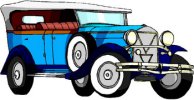
Worksheets and No Prep Teaching Resources
Reading Comprehension Worksheets
Transportation

Transportation
 Worksheets and No Prep Teaching Resources Reading Comprehension Worksheets Transportation |
 Transportation |
| edHelper's suggested reading level: | grades 5 to 7 | |
| Flesch-Kincaid grade level: | 10.12 |
|
Driving Back Through History
By Trista L. Pollard |

|
 1 It may be hard to imagine, but there once was a world without automobiles. In this world, people traveled by foot, by horse, by wagon, and when necessary, by simple row boats. Now everywhere you look, minivans, sedans, coupes, and sports cars fill our neighborhood streets and the highways of America. So who had the breakthrough idea to invent a machine that would help people leave the comfort of their homes to explore other places? Actually, many ingenious scientists and inventors played an important role in the birth and development of the automobile.
1 It may be hard to imagine, but there once was a world without automobiles. In this world, people traveled by foot, by horse, by wagon, and when necessary, by simple row boats. Now everywhere you look, minivans, sedans, coupes, and sports cars fill our neighborhood streets and the highways of America. So who had the breakthrough idea to invent a machine that would help people leave the comfort of their homes to explore other places? Actually, many ingenious scientists and inventors played an important role in the birth and development of the automobile. |
Create Weekly Reading Books
Prepare for an entire week at once! |
| Leave your feedback on Driving Back Through History (use this link if you found an error in the story) |
 |
Transportation
|